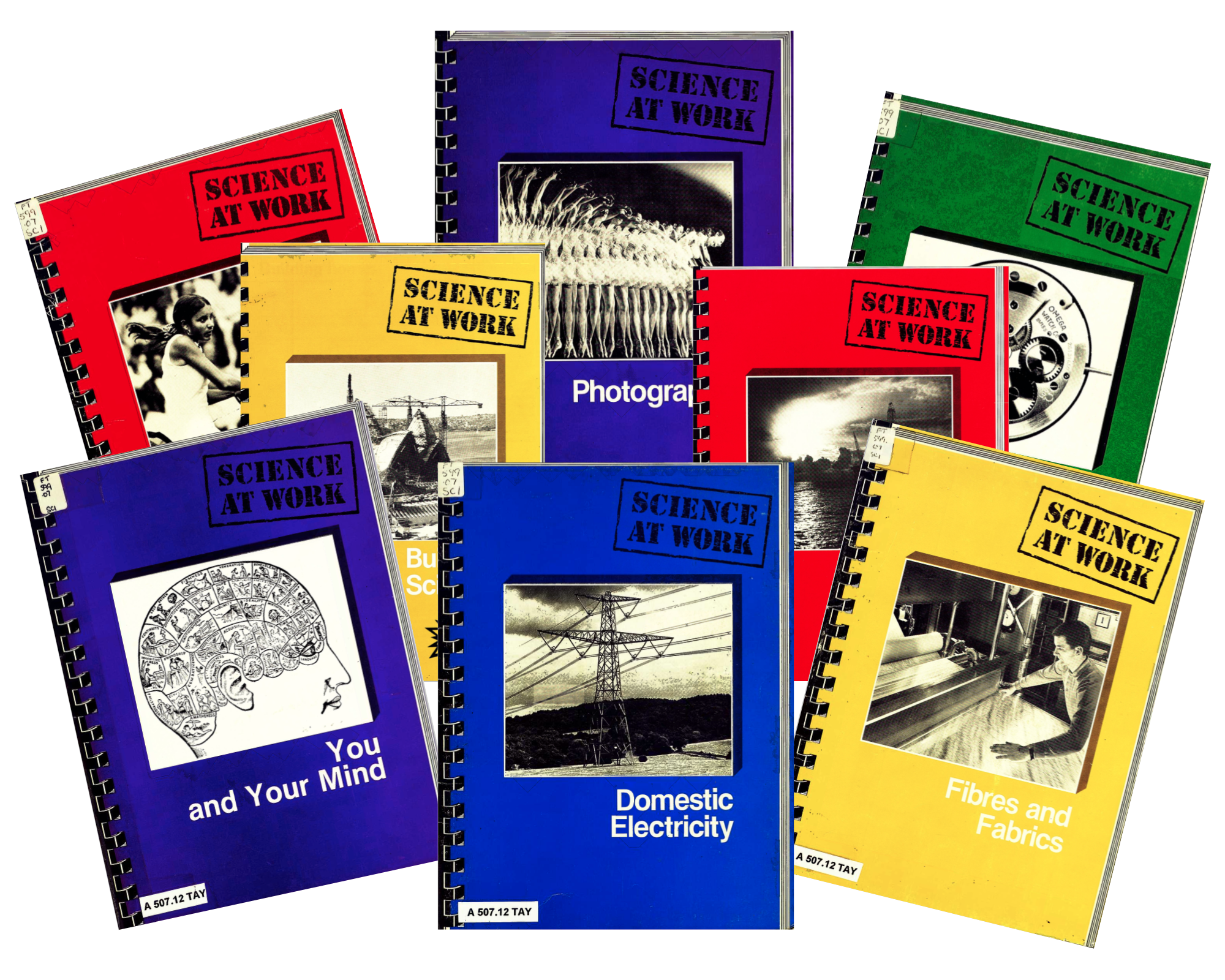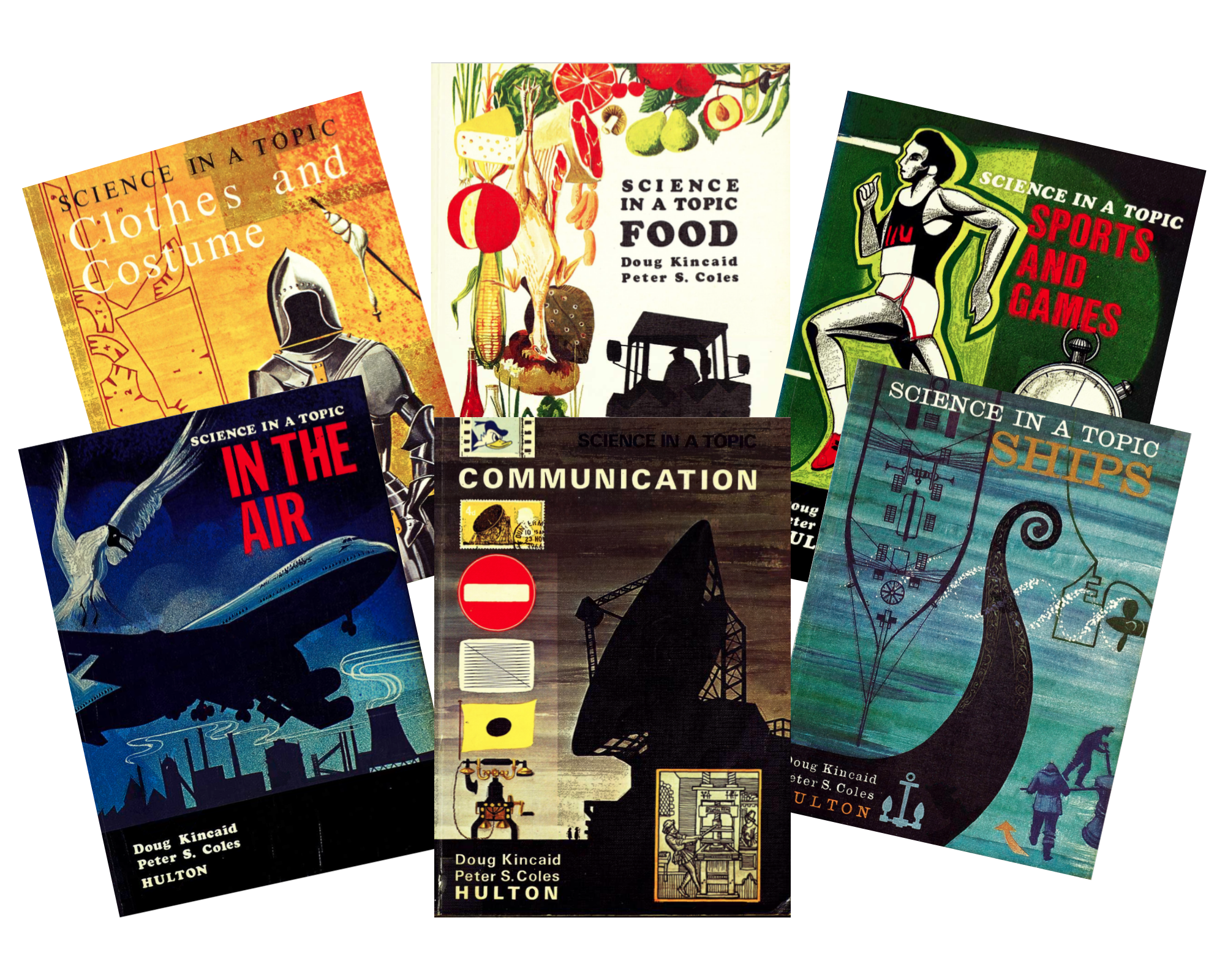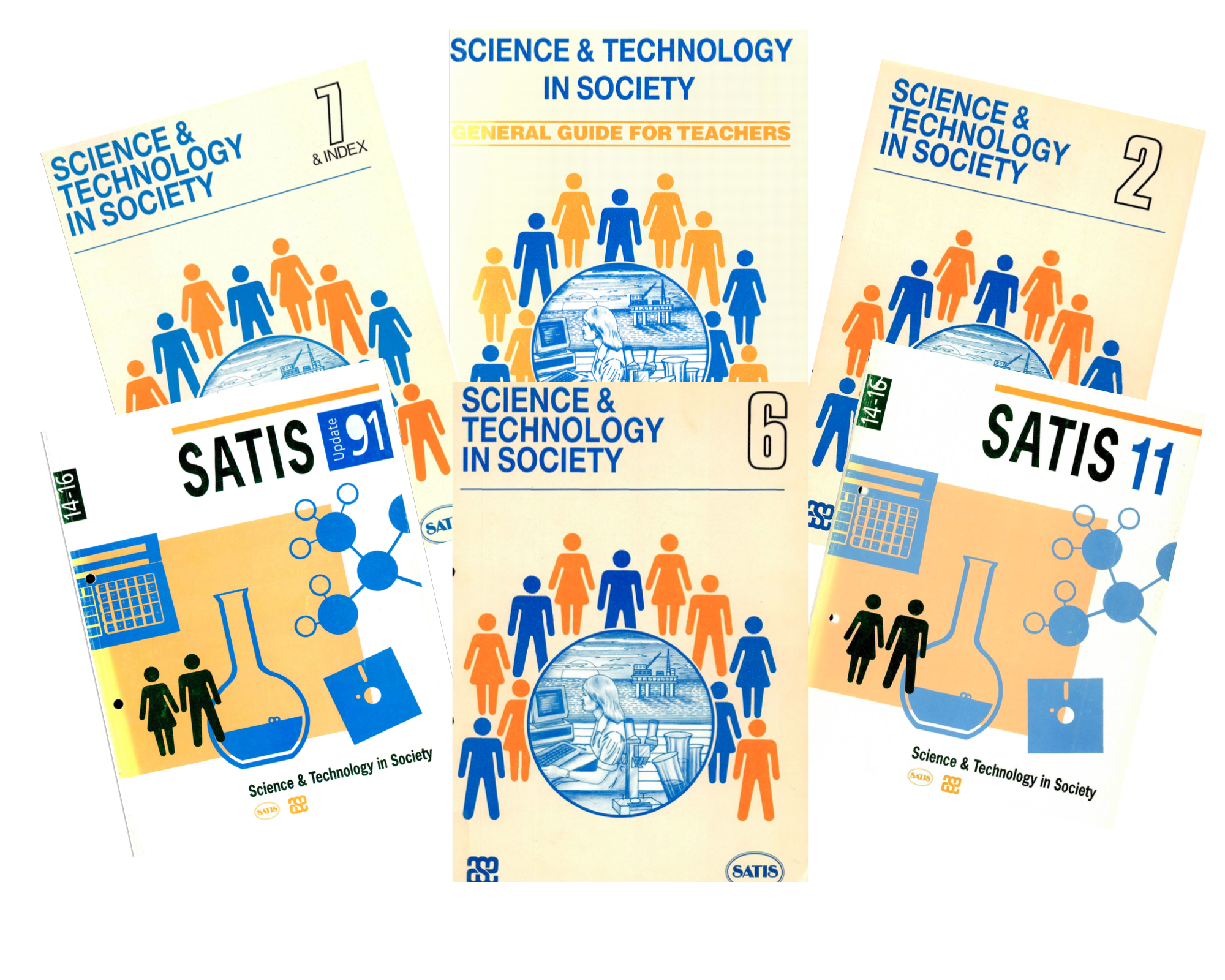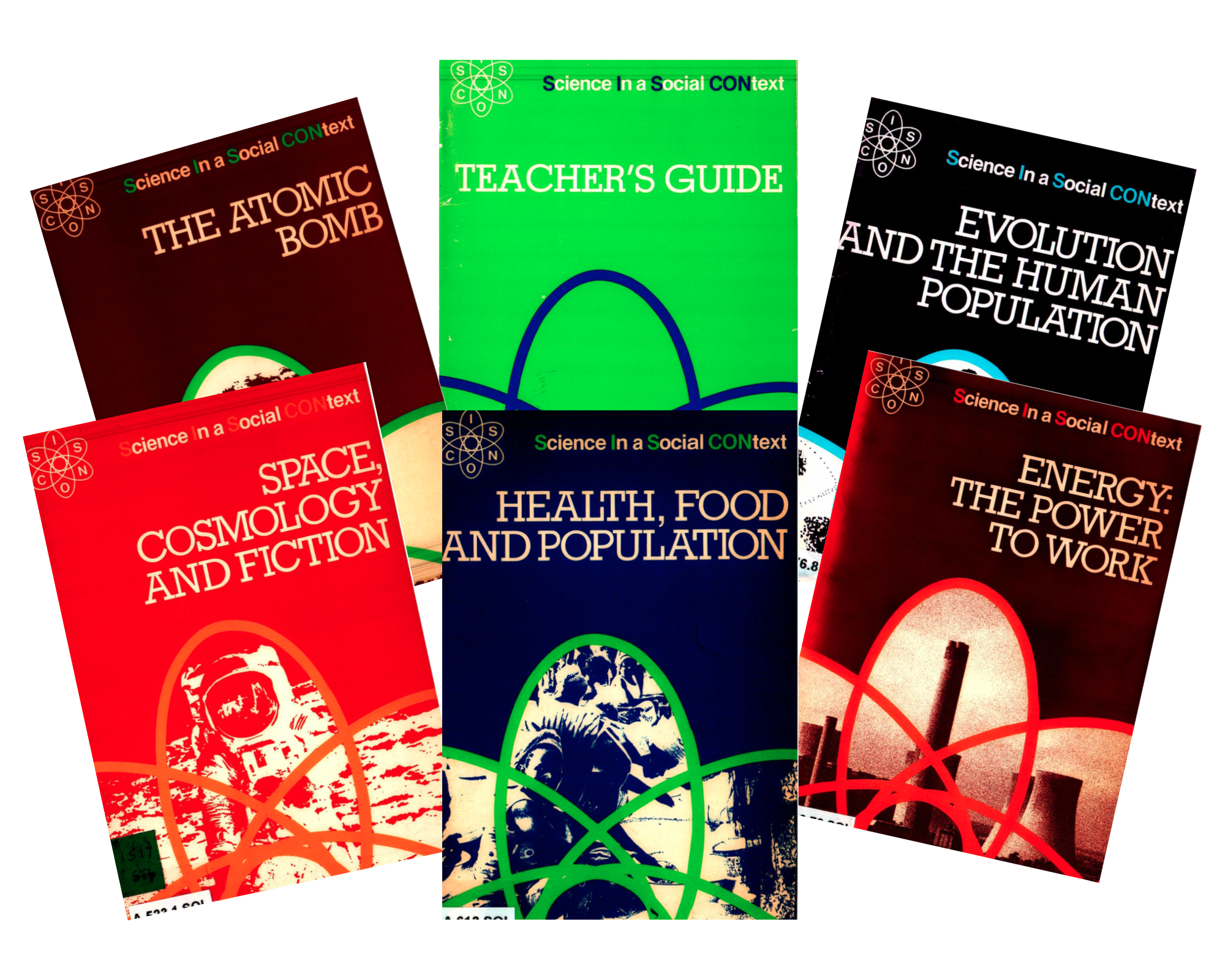sobre ensino de física
projetos de ensino de ciências
Science at Work

Materiais temáticos, produzidos na década de 1980 por professores das escolas secundárias de Manchester, voltados para jovens com idade entre 14 e 16 anos. O conjunto de materiais é composto por 18 unidades,
com variadas atividades experimentais, cujos temas envolvem conceitos de engenharia, ciências da terra, biologia, física e química. Em inglês.
Mais informações em: www.stem.org.uk
Science at Work
[em inglês]
Reacting to changes
Movement of the body
Food and energy
Artificial ressuscitation
Body heat
The heart as a pump
Blood
Accidents
Building homes
Metals
Joining metals
Bridges
Water and building materials
Heat loss and gain
Solar energy
Plastics
Plugs and sockets
Fuses
Household lighting circuit
Hosehold power circuits
Buzzers and bells
Heat loss ans gain
Water heaters
Earth structure
Sedimentary rocks
Fossils and coal
Moving rocks
Oil and gas
Mineral for industry
Rocks for building
Fuels
Forms of energy
Electrical energy
Stored energy
Energy and your body
Energy and plants
Energy for the future
Examining fibres
Burning fibres
Paper
Making fibres
The strength of fibres
The wear of fabrics
Fabrics as insulators
Shrinkage
Detergents
Fabric brighteners
Science at Work
[em inglês]
Falling through the air
Parachutes
Flight
Forces for flight
Control in the air
Space flight
The microscope
Fungi
Bacteria
Using microbes
Damage to our food
Stopping food damage
Milk
Food preservation
Microbes in the kitchen
Dusting for fingerprints
Fingerprints in blood
Fingerprints on difficult surfaces
Shoeprints
Making casts
Comparing soil samples
Heating and burning soils
Forgery
Bloodstains
Chain drives
Belt drives
Spur gears
Compound spur gears
Worm gears
Contrate and helical gears
Cams
Design and build problems
How film takes a picture
The pinhole camera
A simple camera
Using a commercial camera
Developing the film
Making positive prints
Enlarging
Uses of photography
Soil
Soil nutrients
Food from plants
Growing new plants
Damage to plants
Science at Work
[em inglês]
Dirty water
Chemicals in water
Living things in water
Cleaning water
Oil and water
Dirty air
Analysing smoke
Chemicals in air
Sound
Pollution check
Oil and its uses
The four-stroke cycle
The electrical system
Hydraulic systems
Cooling systems
Corrosion
Safety
Friction
Making sense of the world
How we perceive
How we behave
Ways of learning
How we thinkand feel
What kind of person are you?
Skin
Making cosmetics
Emulsions and skin creams
Soap
Hard and soft water
Making eyes!
Nails
Toothpaste
Perfumes and essences
Natural dyes
Mordants and fastness
Creative dyeing
Making and testing dyes
Stains
Colouring metals
Uses of dyes
Introduction
Enzymes
The food industry
Our water supply
Medical applications
The chemical industry
Using plants
The future
Science in a Topic

Materiais temáticos, produzidos entre 1973 e 1985 pela Hulton Educational Publications, voltados para crianças com idade entre 7 e 11 anos. O conjunto, composto por nove livros para estudantes e um guia para o
professor, foi elaborado de forma a auxiliar o professor do ensino fundamental a integrar o conhecimento das ciências dentro dos tópicos comumente desenvolvidos nas escolas na década de 1970 (como história, geografia,
matemática, literatura e arte). Desse modo, esse material convidava o professor a trabalhar com as ciências como parte de um estudo integrado, envolvendo habilidades, processos e metodologias da ciência nas atividades
realizadas em sala de aula. Mais informações em: www.stem.org.uk
Science in a Topic
[em inglês]
Looking at clothes
The raw materials
Fibres threads and fabrics
Keeping warm and dry
Who needs special clothing?
Footwear
Clothing and electricity
Cleaning and caring
Dyes and dyeing
Cloth
claims
Clothes can be more than a covering
Sending messages
Words - and no words
Sound
Pictures and art
Touch
The written word
Printing and newspaper
Flashing lights and mirrors
Telegraph and telephone
Photography
Radio and television
Animal
communication
Science in a Topic
[em inglês]
Good food
Our daily bread
Milk
Sugar and sweets
Salt
Taste and flavour
Colour and food
Meat and fish
Fruit and vegetable
Keeping food
In the kitchen
Looking at homes
Finding out about materials
Walls
Roofs
Windows, doors and floors
Building in the classroom
Tools and machines
Electricity
Water
Animal homes
The air around us
Air and weather
Balloons and airships
Parachutes, kites and gliders
Aeroplanes
Helicopters and hovercraft
Birds
Living in the air
Science in a Topic
[em inglês]
On the move
Energy
Wheels
Two wheels: cycles and motor-cycles
Cars, lorries and buses
Railways
Sledges, skates and skis
Why do ships float?
Salt water and fresh water
The shape of ships
How are the ships built?
Can boats topple over?
How are ships moved?
Anchors are raised, sails are hoisted. How?
How submarines
dive and surface?
How are ships steered?
Sports and games
Balls and games
Pitches and players
Sticks, bats and racquets
Water and winter sports
Running and jumping
Lift, throw and balance
Sports on wheels
Indoor games
SATIS - Science and Technology in Society

Projeto inglês, criado em 1984 pela Association for Science Education, com o objetivo de oferecer ao professor de ciências modelos para o desenvolvimento de aulas temáticas sob a perspectiva CTS (Ciência, Tecnologia
e Sociedade). Voltado para jovens com idade entre 14 e 16 anos, o projeto é composto por 120 unidades temáticas, apresentadas em 12 livretos. Cada unidade foi elaborada para um periodo de, aproximadamente, 75 minutos
de aula. O material apresenta atividades de compreensão textual, propostas de discussão em pequenos grupos, resolução de problemas, pesquisas, simulações, exercícios de tomada de decisão e dramatizações. Em 1991 foi
pulicada uma edição de atualização das unidades publicadas entre 1986 e 1988. Em inglês.
Mais informações em: www.stem.org.uk
SATIS
[em inglês]
Science and Technology in Society
Science and Technology in Society 1
Baixar todas as unidades (101-110) (.zip)
110 Hilltop - an agricultural problem
Science and Technology in Society 2
Baixar todas as unidades (201-210) (.zip)
209 Spectacles and contact lenses
Science and Technology in Society 3
Baixar todas as unidades (301-310) (.zip)
301 Air pollution - where does it come from?
302 Living with kidney failure
304 A medicine to control Bilharzia: Part 1
305 A medicine to control Bilharzia: Part 2
306 Fibre optics and telecommunications
309 Microbes make human insulin
Science and Technology in Society 4
Baixar todas as unidades (401-410) (.zip)
401 Fluoridation of water supplies
SATIS
[em inglês]
Science and Technology in Society 5
Baixar todas as unidades (501-510) (.zip)
503 Paying for national health
506 Materials for life - new parts for old
Science and Technology in Society 6
Baixar todas as unidades (601-610) (.zip)
606 The Tristan Da Cunha dental surveys
608 Should we build a fallout shelter?
609 Hitting the target - with monoclonal antibodies
Science and Technology in Society 7
Baixar todas as unidades (701-710) (.zip)
Science and Technology in Society 8
Baixar todas as unidades (801-810) (.zip)
801 The water pollution mystery
805 The search for the magic bullet
SATIS
[em inglês]
Science and Technology in Society 9
Baixar todas as unidades (901-910) (.zip)
901 The chinese cancer detectives
903 What are the sounds of music?
905 The impact of information technology
907 Your stars - revelations or reassurance?
908 Why not combined heat and power?
Science and Technology in Society 10
Baixar todas as unidades (1001-1010) (.zip)
1002 Quintonal - an industrial hazard
1010 Can it be done? Should it be done?
Science and Technology in Society 11
Baixar todas as unidades (1101-1110) (.zip)
1102 A special type of hearing aid?
1103 Save the salmon! - a problem of ph
1104 Materials to repair teeth
1107 The Eruption of Mount St Helens
1109 Electricity supply and demand
Science and Technology in Society 12
Baixar todas as unidades (1201-1210) (.zip)
1201 Agrochemicals and the environment
1204 From Babylon to biotechnology
1205 Earthquakes – in Britain?
1208 Are there fairies at the bottom of the garden?
1209 Are you made of stardust?
SATIS Updade (1991)
SISCON - Science In a Social CONtext

Produzido em 1983 pela Association for Science Education, o SISCON foi um dos primeiros cursos de ciências do Reino Unido a apresentar discussões sobre tópicos de ciência e suas implicações sociais e políticas.
Um dos objetivos desse conjunto de materiais temáticos era proporcionar ao estudante uma compreensão de interações entre ciência e sociedade. Voltado a jovens com idade entre 14 a 16 anos, o material aborda temas como
o papel do governo e da indústria na ciência; aplicações comerciais de descobertas científicas; o papel dos cientistas na produção de alimentos; a luta contra as doenças; o desenvolvimento de armas modernas; a responsabilidade
dos cientistas pelos resultados de seu trabalho; e os efeitos da ciência e das novas tecnologias na vida diária das pessoas. Mais informações em: www.stem.org.uk
SISCON
[em inglês]
Technology in the stars?
Thinking in the ancient way
Science for modern times
Looking after our water
Looking after our air
Where are we now?
Why we need to know?
Not so sure
The birth of scientific theories
Learning theories and explaining experiments
Science changes its mind
When the scientists disagree
SISCON
[em inglês]
Technology, invention and industry
Ingredients for invention
Research and development in industry
Case-study of plastics
Case-study of microelectronic
Evolution and the human population
What is evolution?
Who believes in Darwin`s Theory?
Evolution and human society
How inheritance works
Future evolution
Science on the payroll
Discovering atomic energy
The start of war
Building the bombs
Responsibility and treachery
The threat of nuclear war
SISCON
[em inglês]
Trying to understand
Useful kinds of energy
How energy affects our living
Our energy future
Energy for the less developed countries
Public health in Britain
Making medicines safe
Living in the Third World
Early views on the Universe
Scientific Cosmology
First journeys into space
How we use space
